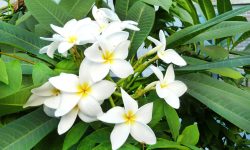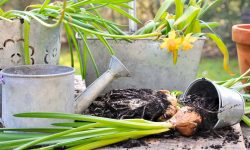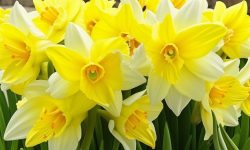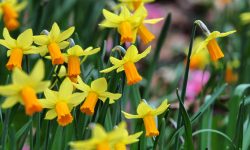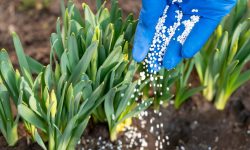Begonias are popular flowering plants cherished for their bright, vibrant blooms and attractive foliage. These versatile plants can thrive both indoors and outdoors, making them a favorite choice among gardeners seeking color throughout the growing season. One of the key practices to maximize their blooming potential is deadheading—the removal of spent flowers—which encourages the plant to produce new blossoms continuously. Understanding how to deadhead begonias correctly will help you enjoy a garden full of fresh, radiant flowers for months on end.
Begonias come in various types, including tuberous, wax, and rex begonias, each with distinct growing habits. Regardless of the variety, deadheading remains a vital part of their care. When old flowers fade and wither, the plant naturally redirects its energy toward seed production. Removing these spent blooms interrupts this process, prompting the begonia to invest energy into producing new flowers rather than seeds. This natural response translates into prolonged flowering and a healthier plant overall.
This comprehensive guide explores the art of deadheading begonias—from recognizing when to remove spent flowers, choosing the right tools, to understanding the best techniques to stimulate continuous flowering. Whether you are a beginner or an experienced gardener, mastering deadheading will elevate your begonia care and enrich your garden’s color palette.
Why Deadheading Is Important for Begonias
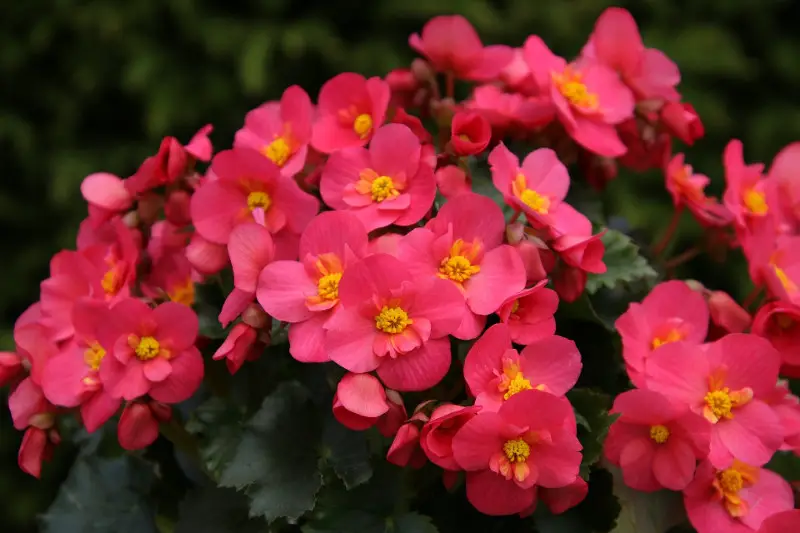
Deadheading is more than just a cosmetic task; it plays a crucial role in the growth cycle and flowering capacity of begonias. When flowers fade naturally, they produce seeds to propagate the plant’s species. This seed production phase shifts the plant’s focus from flowering to reproduction. Consequently, if spent blooms are left on the plant, it will slow or stop producing new flowers.
By removing faded blossoms promptly, gardeners prevent the plant from entering the seed-setting stage, forcing it to produce new buds instead. This redirection of energy increases the total number of flowers and prolongs the blooming season, which is especially important for annual begonias that only have one growing cycle per year.
Deadheading also helps improve air circulation around the plant by clearing away dead or dying plant material, which can harbor pests or diseases. In begonias, where powdery mildew and fungal infections can be problematic in humid environments, maintaining cleanliness through deadheading supports overall plant health.
Additionally, removing dead flowers enhances the plant’s appearance. Old, wilted blooms can make even a healthy begonia look tired and unattractive. Regular deadheading reveals fresh foliage and encourages a more vigorous, lush plant structure.
When to Deadhead Begonias
Knowing the right time to deadhead begonias is key to encouraging continuous flowering. Begonia flowers generally last for several days to over a week, depending on the variety and environmental conditions. You should deadhead as soon as the flowers begin to fade, wilt, or turn brown.
In many begonias, the flower petals will lose their vibrant color and start to shrivel or drop. This is a clear sign that the flower has completed its blooming cycle. Waiting too long to deadhead allows the plant to divert energy into seed development, which reduces the overall flower production.
For optimal results, inspect your begonias regularly during the growing season—ideally once or twice a week—to remove any spent blooms promptly. This routine maintenance helps maintain the momentum of blooming and keeps the plant focused on producing fresh flowers.
In warmer climates or with indoor begonias under controlled conditions, flowers may bloom nearly year-round, requiring consistent deadheading throughout the year. In cooler climates, the blooming period may be shorter, but deadheading during this time is still beneficial for maximizing flowering.
How to Identify Spent Flowers on Begonias
Begonias produce flowers in clusters, often on tall, slender stems. Identifying which flowers to deadhead involves recognizing signs of aging or decline in the blooms. Spent flowers typically exhibit fading color, wilting petals, or a dried appearance.
In some begonia varieties, especially tuberous begonias, the flower petals may curl inward or become brittle as they age. Wax begonias often have smaller but similarly delicate blooms that lose their shine and firmness when spent. Rex begonias, known more for their foliage than their flowers, still benefit from removing any faded blooms to maintain plant health.
Carefully observing your plant will help you distinguish healthy, vibrant flowers from those ready to be removed. Focus on flowers that no longer contribute to the plant’s aesthetics and are showing clear signs of decline. This discernment ensures you don’t accidentally remove buds or flowers still in their prime.
The Right Technique for Deadheading Begonias
To deadhead begonias effectively, it’s essential to remove the entire spent flower, including the flower stem or peduncle. Snapping off only the petals can leave the stem intact, which may still signal the plant to continue seed production.
Using clean, sharp pruning shears or scissors allows for precise cuts that minimize damage to the plant. Locate the base of the spent flower stem where it joins a leaf node or a main stem, and make the cut just above a set of healthy leaves or buds. This encourages the plant to branch and produce new flowering stems from the cut point.
For smaller or more delicate begonias, such as wax begonias, gentle pinching between your thumb and forefinger can sometimes suffice for deadheading. However, for larger blooms or woody stems, cutting with tools is preferable.
Make sure to sanitize your tools regularly to prevent the spread of diseases between plants. Cleaning with rubbing alcohol or a diluted bleach solution before and after use is a simple but effective habit.
Tools Needed for Deadheading Begonias
While deadheading is a simple task, having the right tools ensures precision and protects the health of your begonias. A pair of sharp, clean bypass pruning shears is ideal for cutting flower stems without crushing them. These shears provide clean cuts that heal quickly, minimizing the risk of infection.
Small, pointed garden scissors can also be handy, especially for delicate or compact begonias. Their precision allows you to navigate crowded foliage and target specific spent flowers without disturbing nearby healthy growth.
Garden gloves are recommended, particularly if you handle many plants or have sensitive skin. Gloves protect against minor scratches and reduce contact with sap, which can sometimes cause irritation.
A container or bucket for collecting spent flowers keeps your workspace tidy and prevents the spread of diseases. Removing dead flowers from the garden area reduces places where pests or fungal spores can harbor.
How Deadheading Encourages Continuous Flowering
Deadheading prompts begonias to redirect their energy from seed production to producing new flowers. This hormonal response is key to continuous flowering. When the plant perceives that its reproductive success has been interrupted by removing faded flowers, it responds by forming new buds to try again.
Repeated deadheading throughout the growing season keeps the plant in this reproductive “loop,” resulting in multiple cycles of flowering. This is particularly beneficial for annual begonias, which have a limited lifespan and depend on sustained flower production to maximize their impact.
In addition to stimulating new blooms, deadheading prevents the plant from becoming leggy or overcrowded. Removing spent flowers opens up space within the plant, allowing better air circulation and sunlight penetration. These conditions promote stronger growth and reduce disease pressure.
Supporting Deadheading with Proper Care Practices
While deadheading is crucial, it works best alongside good cultural practices. Begonias thrive in well-draining soil with consistent moisture. Watering at the base of the plant helps prevent fungal diseases and supports healthy root systems.
Feeding begonias with a balanced, water-soluble fertilizer every few weeks during the growing season provides nutrients necessary for sustained flowering. Avoid excessive nitrogen fertilizers, which encourage foliage growth at the expense of flowers.
Begonias prefer partial shade to filtered sunlight, depending on the variety. Excessive direct sun can scorch leaves, while too little light may reduce flowering. Providing optimal light conditions helps the plant respond better to deadheading by promoting vigorous growth.
Regularly inspect plants for pests like aphids, spider mites, and whiteflies, which can weaken the plant and reduce bloom quality. Early intervention with appropriate treatments preserves plant health and maximizes the benefits of deadheading.
Dealing with Common Deadheading Challenges
Begonias, like all plants, can face challenges that complicate deadheading. Sometimes spent flowers can be stubbornly attached, especially in humid conditions where decay slows down. In these cases, gently loosening the flower stem with pruning tools or fingers helps remove the spent bloom without damaging the plant.
Another issue is accidental removal of healthy buds, which can set back flowering progress. To avoid this, take your time to distinguish between faded flowers and new buds, especially in dense or bushy plants.
Begonias can also suffer from fungal diseases such as powdery mildew, which thrives in poorly ventilated, moist environments. Deadheading improves airflow but also requires you to sanitize tools to avoid spreading pathogens. Ensuring plants are spaced properly and watering in the morning can reduce disease risk.
If begonias become leggy or sparse, regular pinching back of stems combined with deadheading can restore a compact, bushy form that supports more flowering.
Seasonal Considerations for Deadheading Begonias
In temperate zones, begonias are often grown as annuals or houseplants, with a defined growing season. Deadheading is most effective during this active period, usually spring through fall. As temperatures drop and the plant begins to slow down or enter dormancy, deadheading should be reduced or stopped.
For tuberous begonias, which go dormant in winter, cease deadheading once the flowering period ends and allow the plant to rest. In indoor settings where begonias may bloom year-round, deadheading remains useful as long as flowers continue to fade.
Understanding your specific begonia variety and growing conditions helps you plan deadheading routines that match the plant’s natural cycles, maximizing flower production and plant health.
FAQs About How to Deadhead Begonias
How often should I deadhead my begonias?
Deadheading should be done regularly, ideally once or twice a week during the blooming season, to keep the plant focused on producing new flowers.
Can I deadhead begonias by pinching?
Yes, gentle pinching can work for small or soft-stemmed begonias, but for larger or woodier stems, using clean pruning shears is better.
Does deadheading improve begonia health?
Yes, removing spent flowers reduces disease risk, improves airflow, and encourages stronger growth.
Should I deadhead all types of begonias?
Most flowering begonias benefit from deadheading, but foliage begonias like rex varieties may not require it as much.
When should I stop deadheading begonias?
Stop deadheading as the plant slows growth in late fall or when entering dormancy to allow natural rest.

